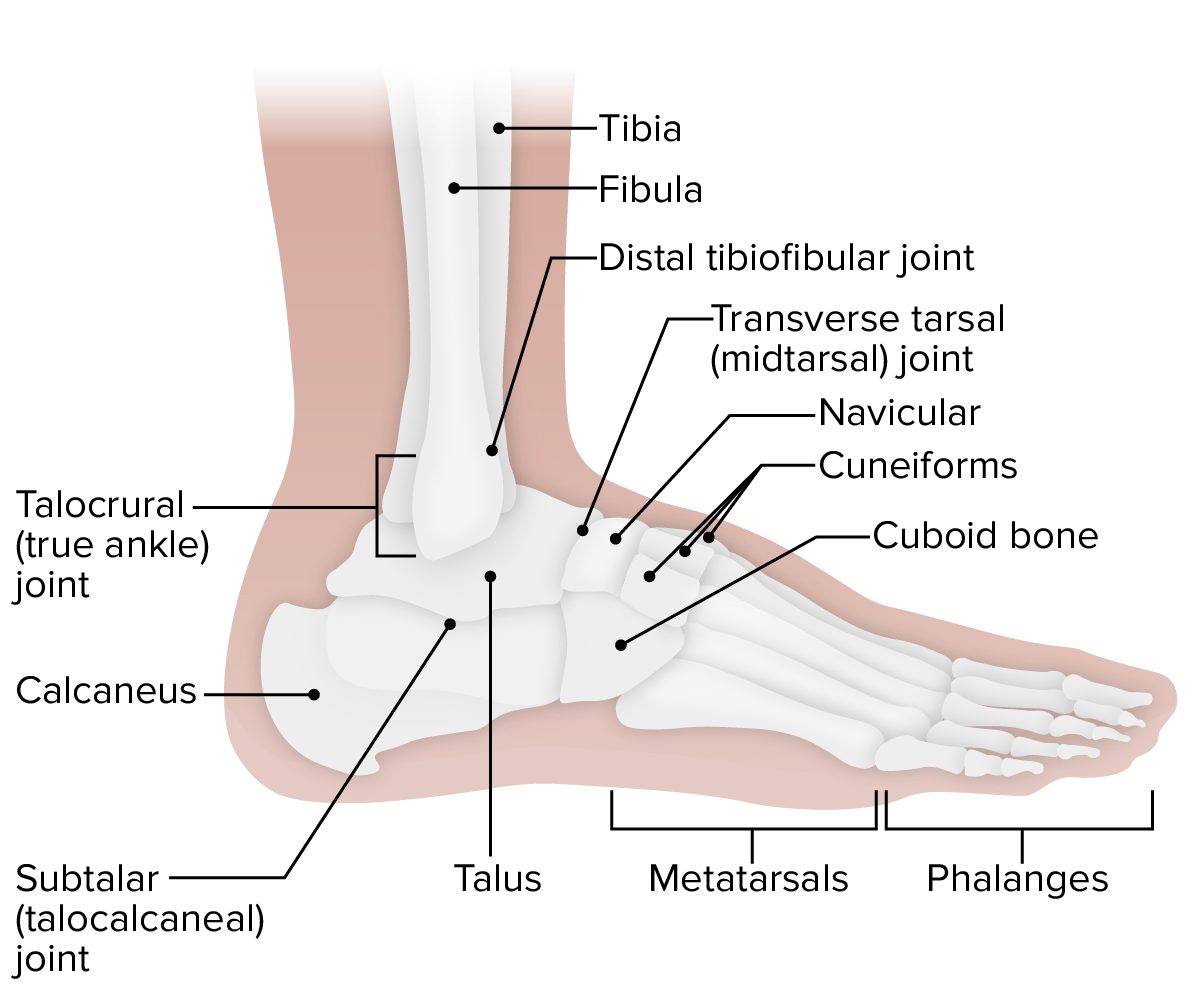Playlist
Show Playlist
Hide Playlist
Arches of the Foot – Joints of Lower Limb
-
Slides 09 LowerLimbAnatomy Pickering.pdf
-
Download Lecture Overview
00:01 Okay. So to finish, I just want to talk about the arches of the foot. We have both a medial and a lateral arch of the foot, and this creates this arch where we have this space run along the sole of the foot for the muscles and the neurovascular structures. This allows a shock absorber. It allows a degree of spring bounds important when we’re moving. So the arches of the foot are important in distributing the weight of the foot and acting as a spring board for movements such as walking, running, and jumping. We have a longitudinal arch of the foot. We have medial and lateral parts. The medial arch is higher and much more significant. Here, we have the medial arch. We can see it’s formed by the three metatarsals, we can see here. 00:55 It’s formed by the three cuneiforms, we can see here. It’s also formed by the navicular and the talus and the calcaneus. So we have this arch, this medial arch here. It is supported by the tendinous attachments of the anterior and posterior tibialis muscles. So these tendinous attachments from these muscles help to support this arch, and also the fibularis longus tendon. 01:20 The lateral arch is flatter and it’s against the floor when standing. It is formed from the calcaneus, the cuboid, and the lateral two metatarsals. So it’s not as high as the medial arch. The integrity of the bony arches are maintained by the ligaments of the foot. 01:39 So here, we can see the long plantar ligaments. We can see the plantar calcaneonavicular ligaments again, and these are holding the arches together, supporting them, allowing that spring board during movement. So the integrity of the bony arches are maintained by the ligaments of the foot. Also by the intrinsic muscles and the long tendons of the extrinsic muscles that also work on the foot. So in this lecture, we’ve looked at the hip joints, we’ve looked at the knee joints, and we’ve looked at the talofibular joints. And we’ve looked at the specific bones that articulate to form these joints. We then looked at the ankle joints, the joints of the foot, and the arches of the foot.
About the Lecture
The lecture Arches of the Foot – Joints of Lower Limb by James Pickering, PhD is from the course Lower Limb Anatomy [Archive].
Included Quiz Questions
Which structure takes part in the formation of the knee joint?
- Condyle of the tibia
- Head of the fibula
- Medial arch
- Lateral arch
- Acetabulum
Which structure separates the medial and lateral condyles of the femur?
- Intercondylar notch
- Intertrochanteric crest
- Intertrochanteric line
- Popliteal fossa
- Acetabulum
Which statement describes the arches of the feet?
- They allow for even distribution of body weight onto the surface.
- They provide a solid, inflexible bony structure.
- They depend largely on bony factors.
- They are not present in newborns.
- They have an anterior and posterior arch.
Which structure forms the medial arch of the foot?
- Calcaneus
- All metatarsals
- 6 cuneiforms
- Tibia
- Fibula
Customer reviews
5,0 of 5 stars
| 5 Stars |
|
5 |
| 4 Stars |
|
0 |
| 3 Stars |
|
0 |
| 2 Stars |
|
0 |
| 1 Star |
|
0 |





